 ICACT20230182 Slide.30
[Big slide for presentation]
[YouTube]
ICACT20230182 Slide.30
[Big slide for presentation]
[YouTube] |
Chrome Text-to-Speach Click!! Click!! |
 |
Thank you for listening
|
 ICACT20230182 Slide.29
[Big slide for presentation]
[YouTube]
ICACT20230182 Slide.29
[Big slide for presentation]
[YouTube] |
Chrome Text-to-Speach Click!! Click!! |
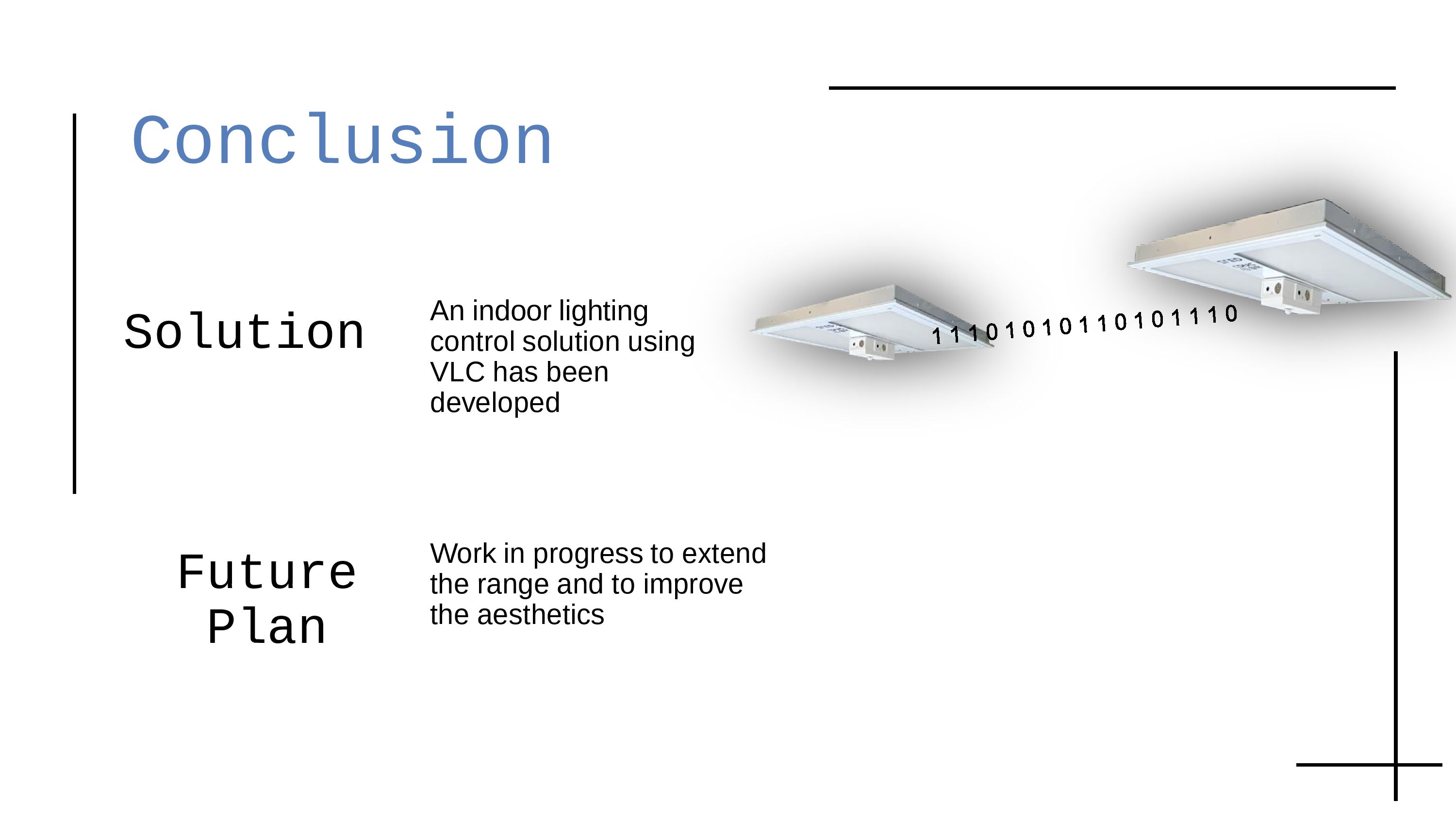 |
An indoor lighting control solution using visible light communication has been developed. Work is in progress to extend the range and to improve the aesthetics
|
 ICACT20230182 Slide.28
[Big slide for presentation]
[YouTube]
ICACT20230182 Slide.28
[Big slide for presentation]
[YouTube] |
Chrome Text-to-Speach Click!! Click!! |
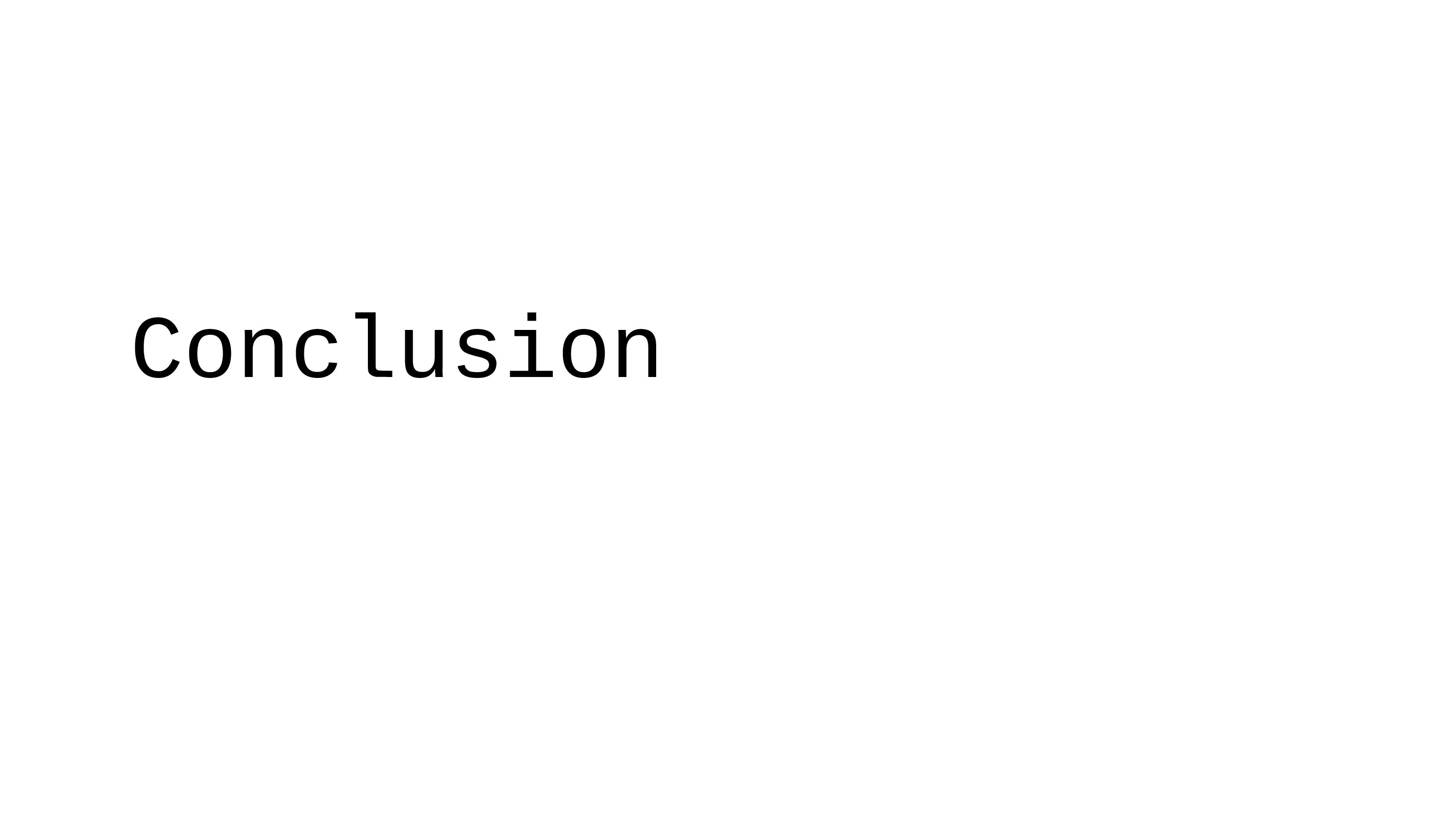 |
This section briefs the conclusion summary and our future plan
|
 ICACT20230182 Slide.27
[Big slide for presentation]
[YouTube]
ICACT20230182 Slide.27
[Big slide for presentation]
[YouTube] |
Chrome Text-to-Speach Click!! Click!! |
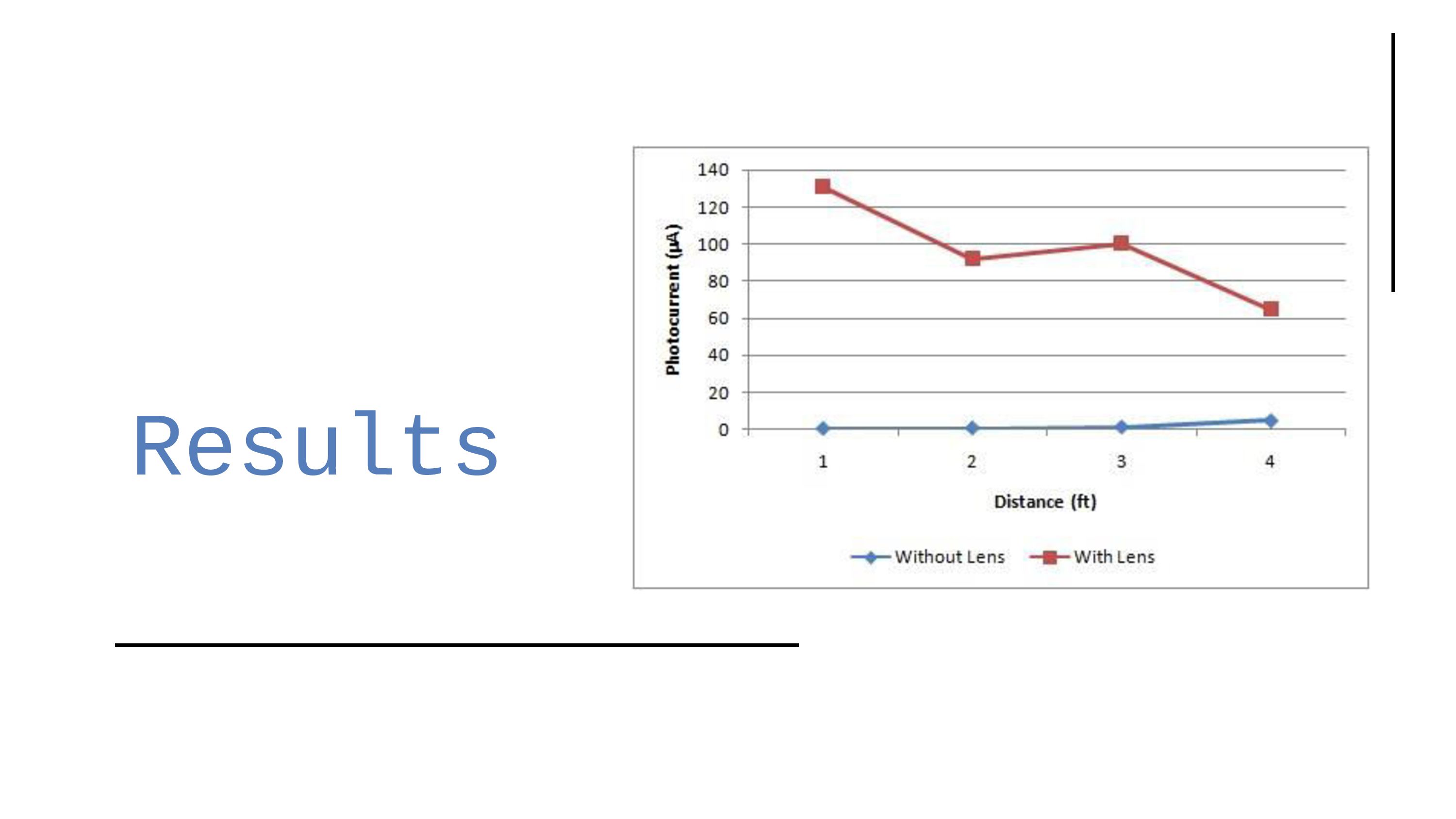 |
Photocurrent measured at different distances with and without lens is shown here. As per the experimental analysis, up to 4 feet communication range has been achieved using the proposed system.
|
 ICACT20230182 Slide.26
[Big slide for presentation]
[YouTube]
ICACT20230182 Slide.26
[Big slide for presentation]
[YouTube] |
Chrome Text-to-Speach Click!! Click!! |
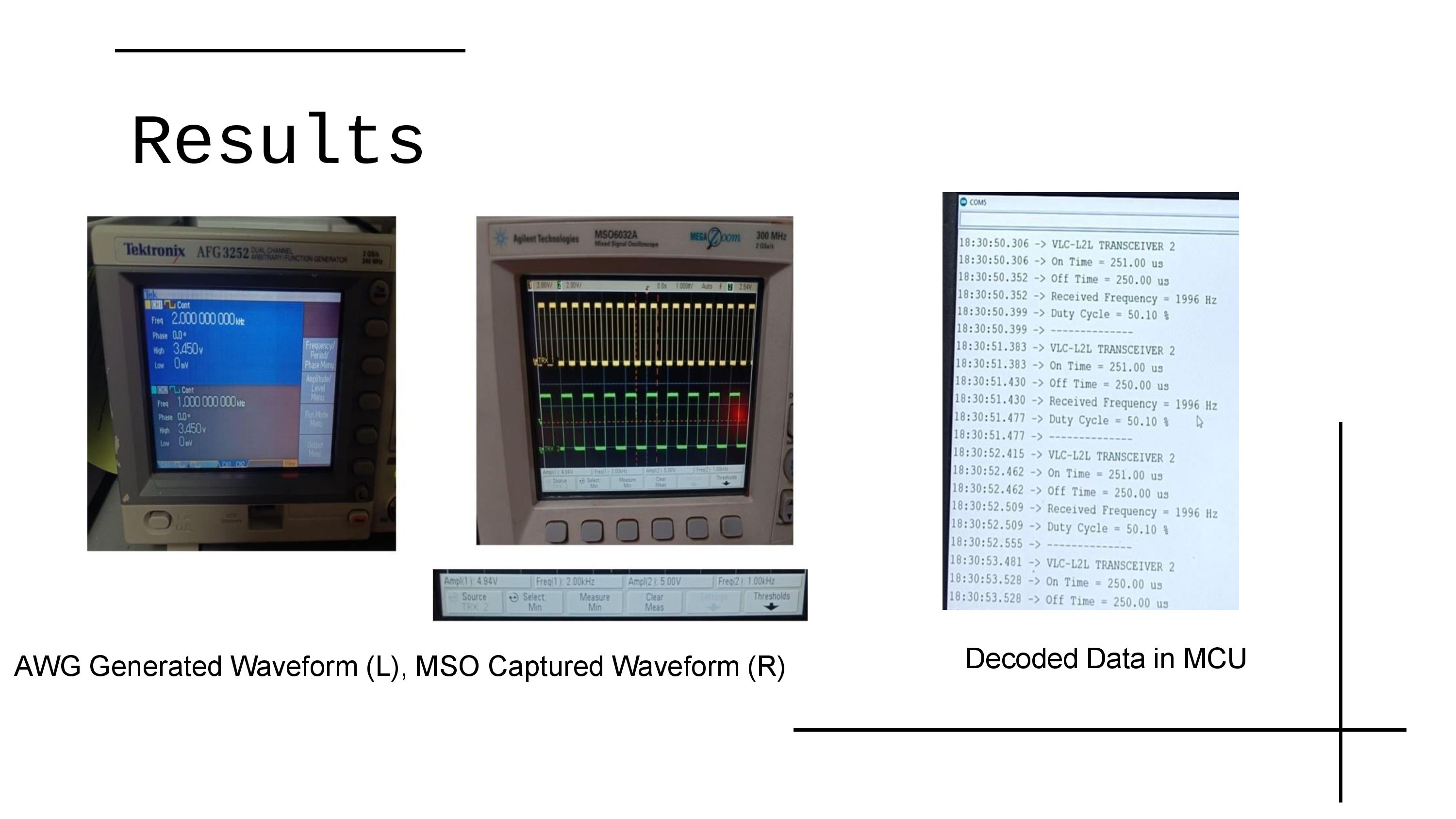 |
Waveform generated at AWG and captured at MSO via visible light is shown. Also, data decoded by the microcontroller for VLC Transceiver 2 is shown here
|
 ICACT20230182 Slide.25
[Big slide for presentation]
[YouTube]
ICACT20230182 Slide.25
[Big slide for presentation]
[YouTube] |
Chrome Text-to-Speach Click!! Click!! |
 |
Experiments have been conducted to find the maximum communication range of full duplex VLC transceiver. Arbitrary Waveform Generator (AWG) 1 generates a square wave of 2 KHz and AWG 2 generates waveform of 1 KHz with amplitude of 3.45 V. Generated square wave is fed to the transmitter module which in-turn transmits the data through VLC. Receiver module receives the data and displays the output in Mixed Signal Oscilloscope (MSO). Experimental setup of transceiver 1 and 2 to find maximum communication distance is shown here
|
 ICACT20230182 Slide.24
[Big slide for presentation]
[YouTube]
ICACT20230182 Slide.24
[Big slide for presentation]
[YouTube] |
Chrome Text-to-Speach Click!! Click!! |
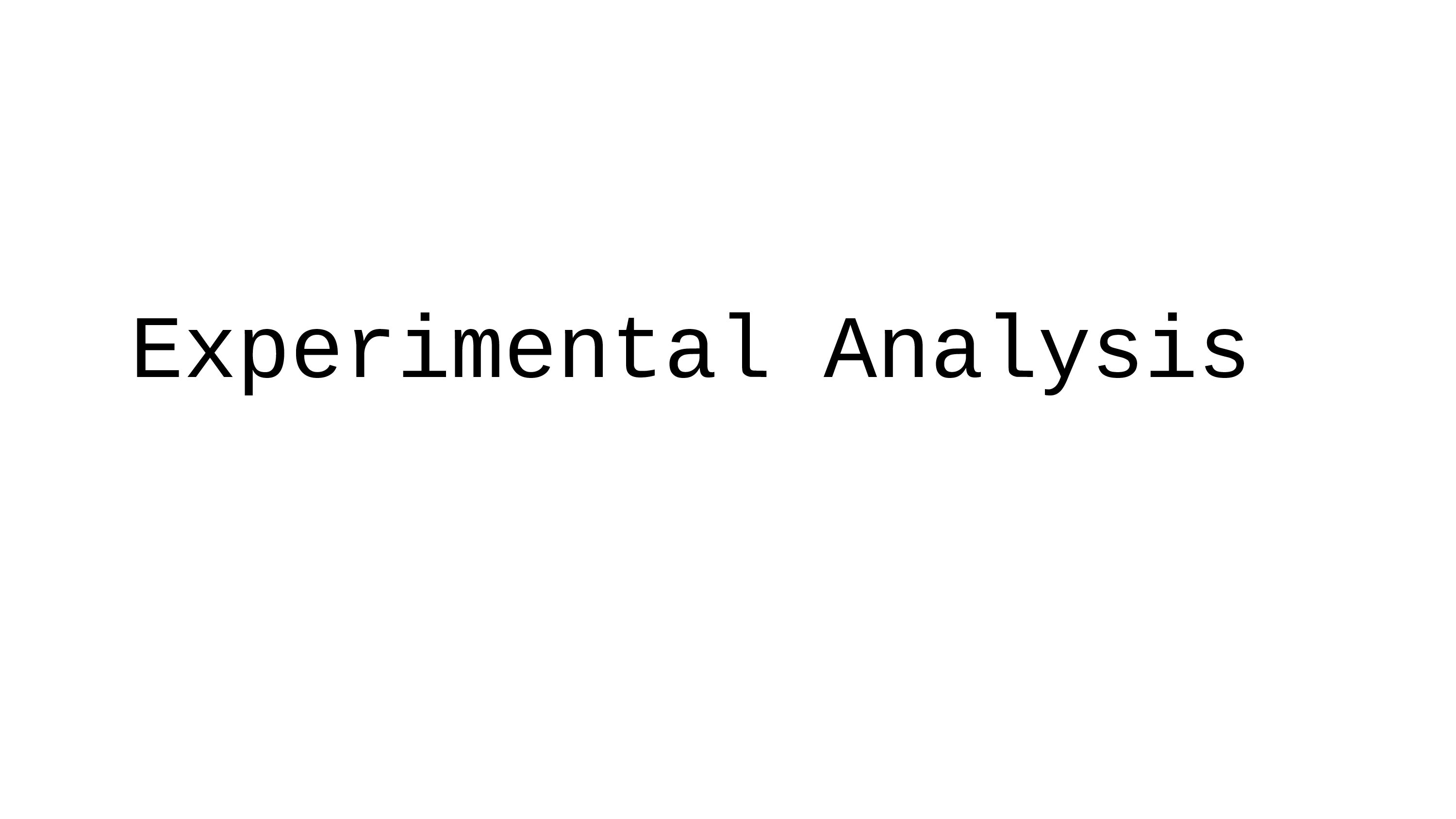 |
This section describes the experimental analysis and results
|
 ICACT20230182 Slide.23
[Big slide for presentation]
[YouTube]
ICACT20230182 Slide.23
[Big slide for presentation]
[YouTube] |
Chrome Text-to-Speach Click!! Click!! |
 |
When a person leaves, a non-occupancy state is detected and OFF command is transmitted to the adjacent luminaire. Upon reception, illumination LED is turned off when all the lights in a zone are sensed un-occupied
|
 ICACT20230182 Slide.22
[Big slide for presentation]
[YouTube]
ICACT20230182 Slide.22
[Big slide for presentation]
[YouTube] |
Chrome Text-to-Speach Click!! Click!! |
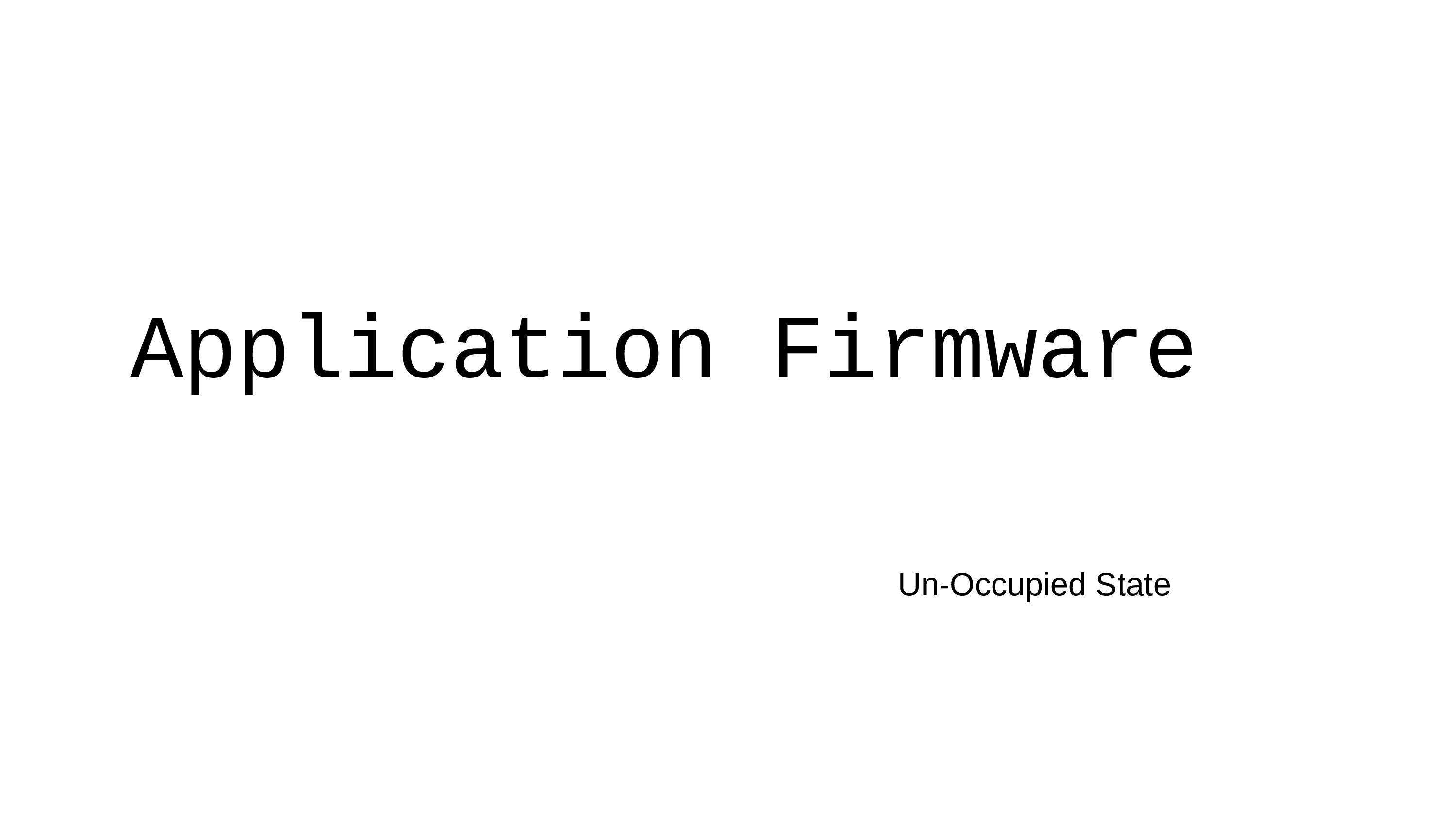 |
Steps involved upon detection of non-occupancy will be explained in next slide
|
 ICACT20230182 Slide.21
[Big slide for presentation]
[YouTube]
ICACT20230182 Slide.21
[Big slide for presentation]
[YouTube] |
Chrome Text-to-Speach Click!! Click!! |
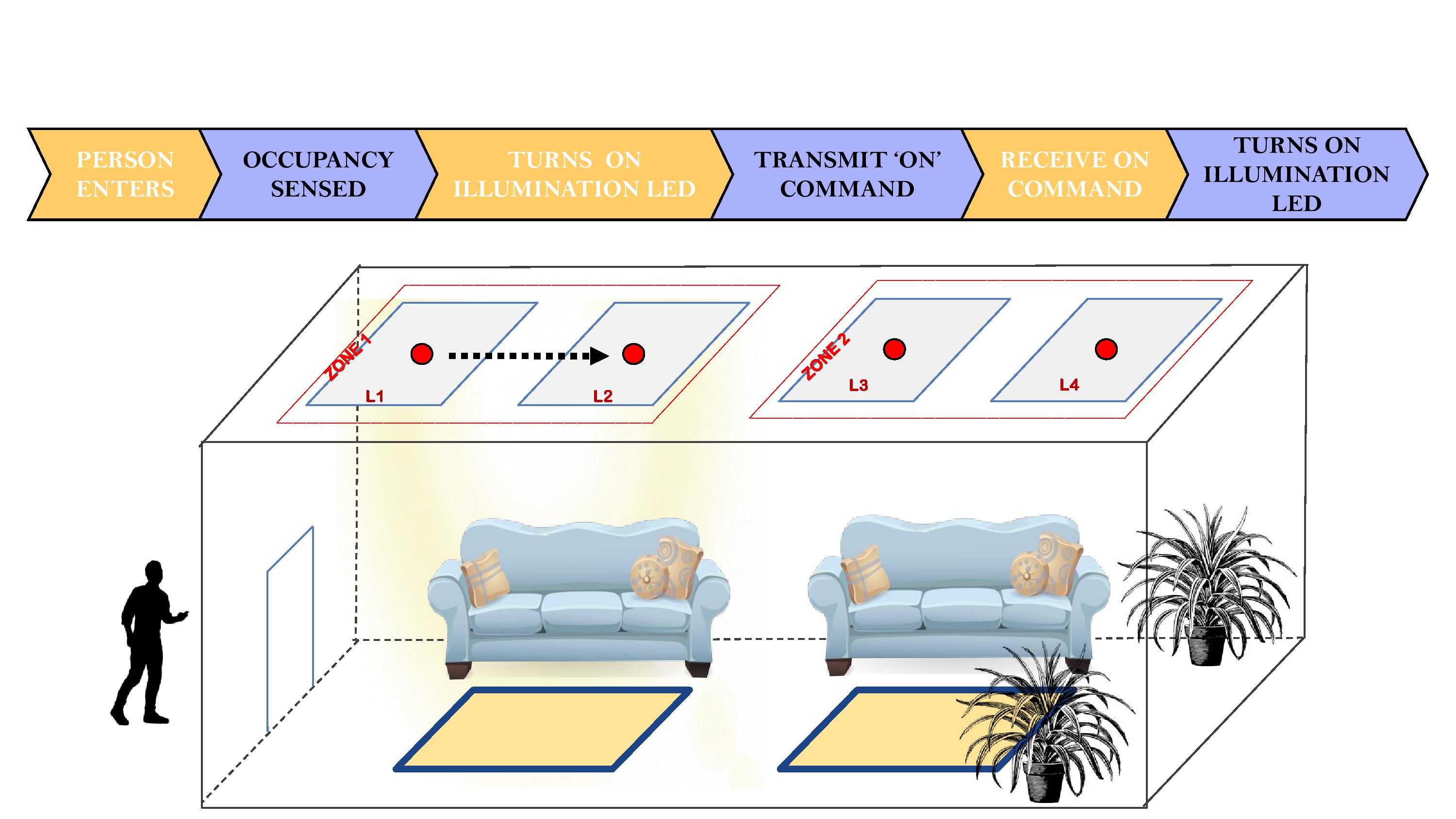 |
When a person enters, occupancy is sensed and turns on the illumination LED. ON command is transmitted to adjacent luminaire. Upon reception, adjacent luminaire turns ON its illumination LED
|
 ICACT20230182 Slide.20
[Big slide for presentation]
[YouTube]
ICACT20230182 Slide.20
[Big slide for presentation]
[YouTube] |
Chrome Text-to-Speach Click!! Click!! |
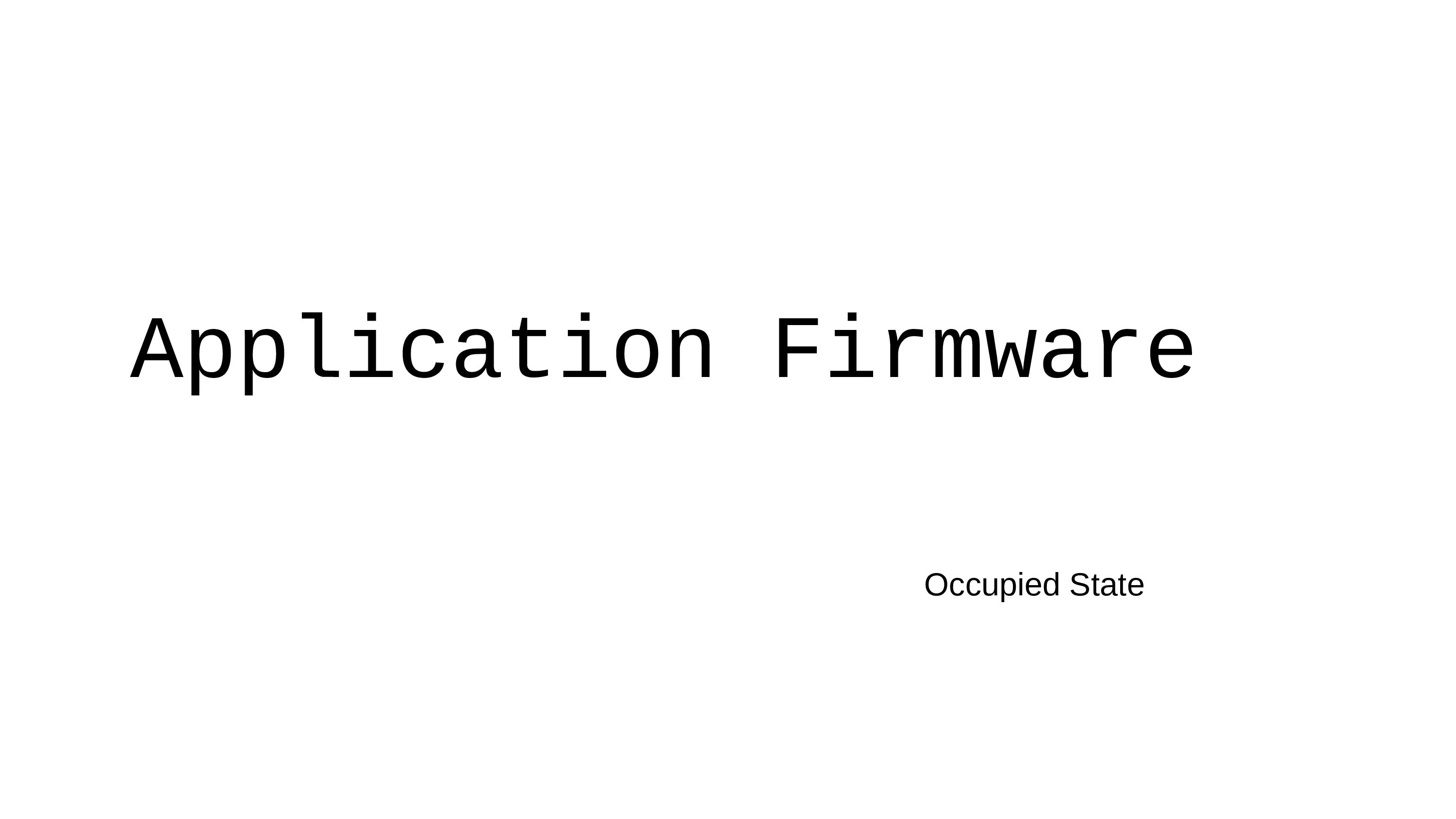 |
Steps involved upon detection of occupancy will be explained in next slide
|
 ICACT20230182 Slide.19
[Big slide for presentation]
[YouTube]
ICACT20230182 Slide.19
[Big slide for presentation]
[YouTube] |
Chrome Text-to-Speach Click!! Click!! |
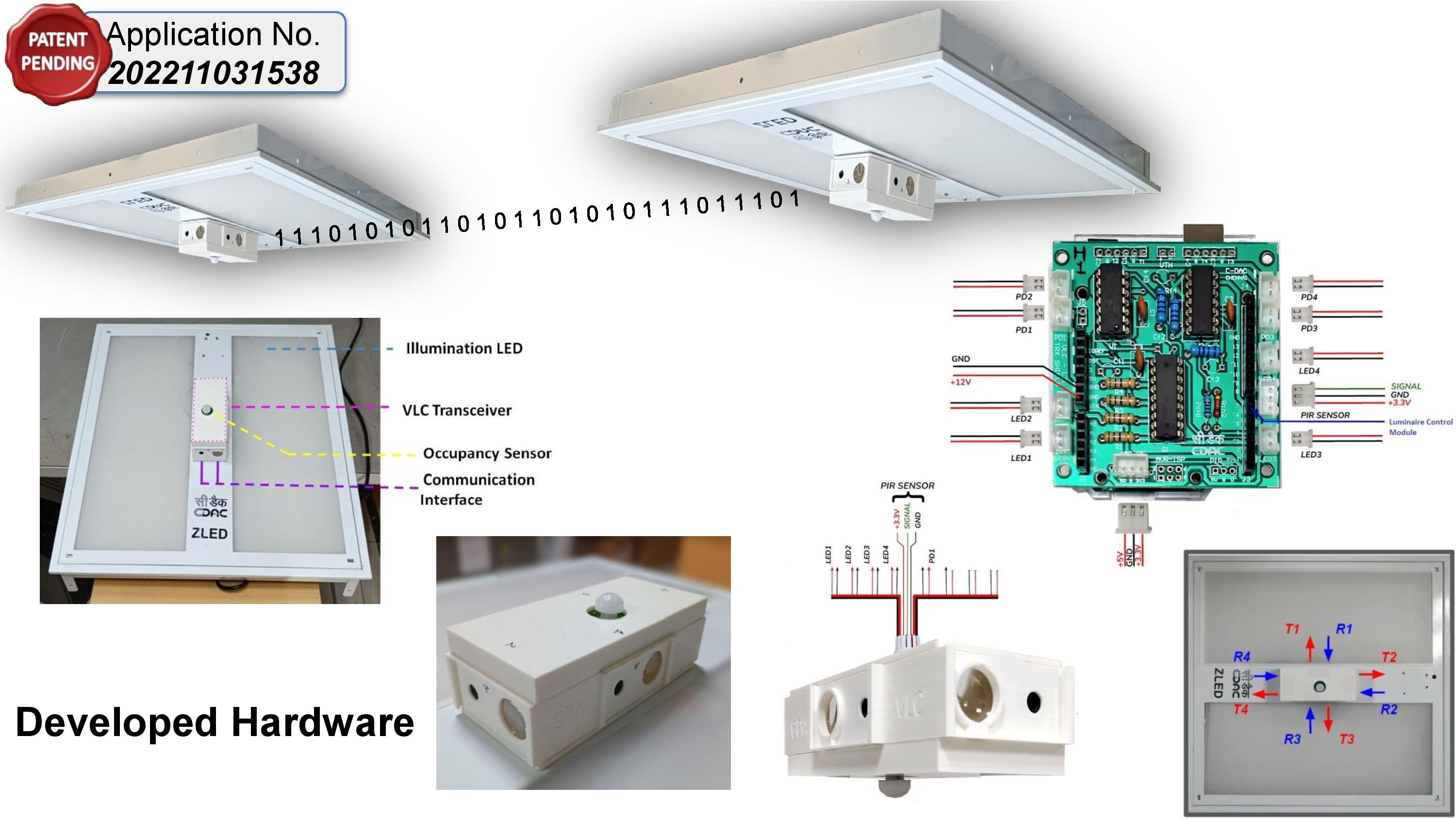 |
VLC Transceiver developed is shown here. Indian patent has been filed for the proposed solution
|
 ICACT20230182 Slide.18
[Big slide for presentation]
[YouTube]
ICACT20230182 Slide.18
[Big slide for presentation]
[YouTube] |
Chrome Text-to-Speach Click!! Click!! |
 |
To control the illumination LEDs, a control module has been developed. Based on the commands received from the microcontroller, the control module turns ON/OFF the illumination LEDs. Luminaire control module can control any 2¡¯x2¡¯ LED luminaries¡¯ up to 100 W.
|
 ICACT20230182 Slide.17
[Big slide for presentation]
[YouTube]
ICACT20230182 Slide.17
[Big slide for presentation]
[YouTube] |
Chrome Text-to-Speach Click!! Click!! |
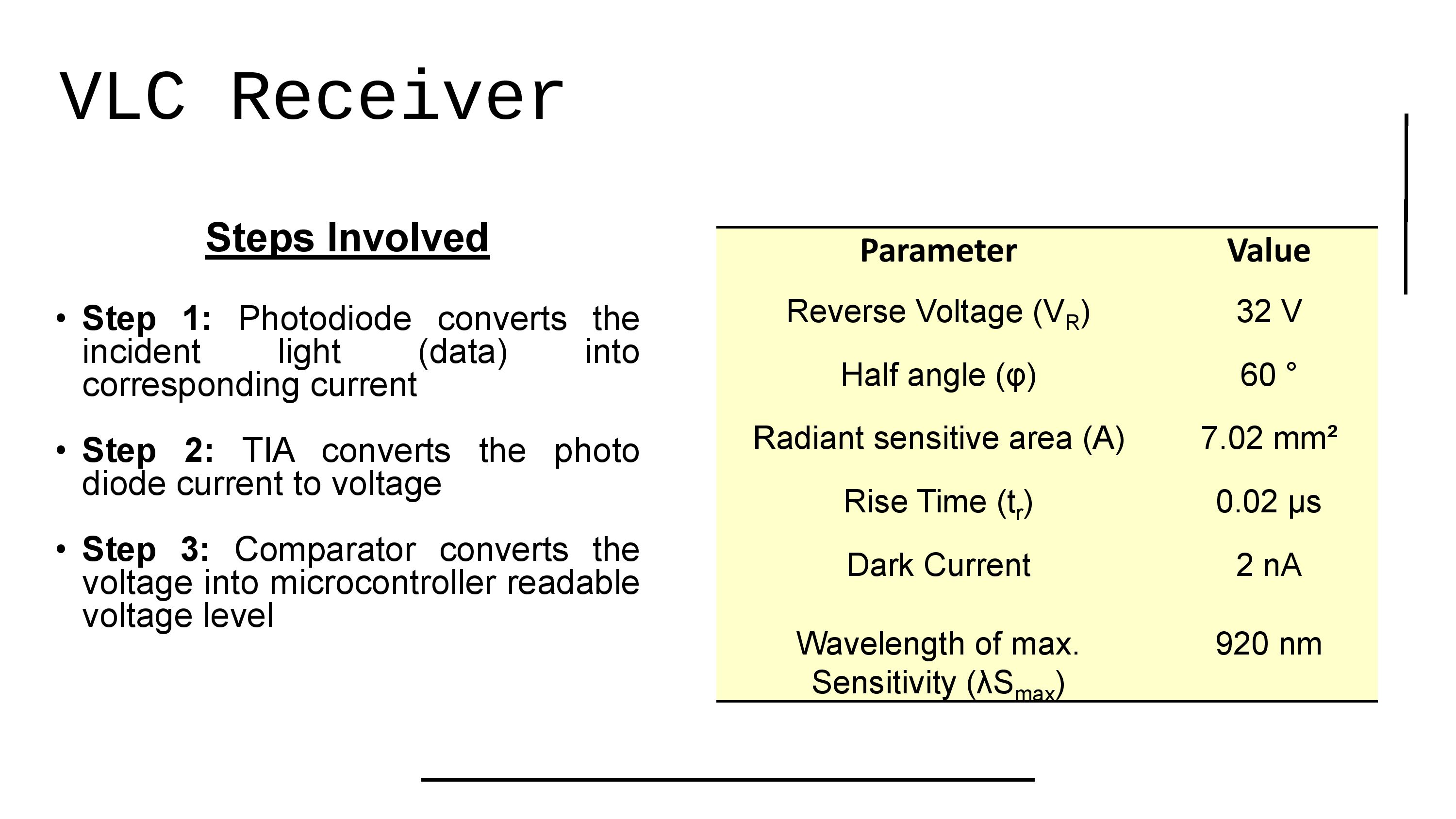 |
VLC receiver consists of photodiode, trans-impedance amplifier and a comparator. Photodiode converts the incident light into corresponding current. TIA converts the photo diode current to voltage. Comparator converts the voltage into microcontroller readable voltage level
Specifications of photodiode used in the proposed system is shown in Table
|
 ICACT20230182 Slide.16
[Big slide for presentation]
[YouTube]
ICACT20230182 Slide.16
[Big slide for presentation]
[YouTube] |
Chrome Text-to-Speach Click!! Click!! |
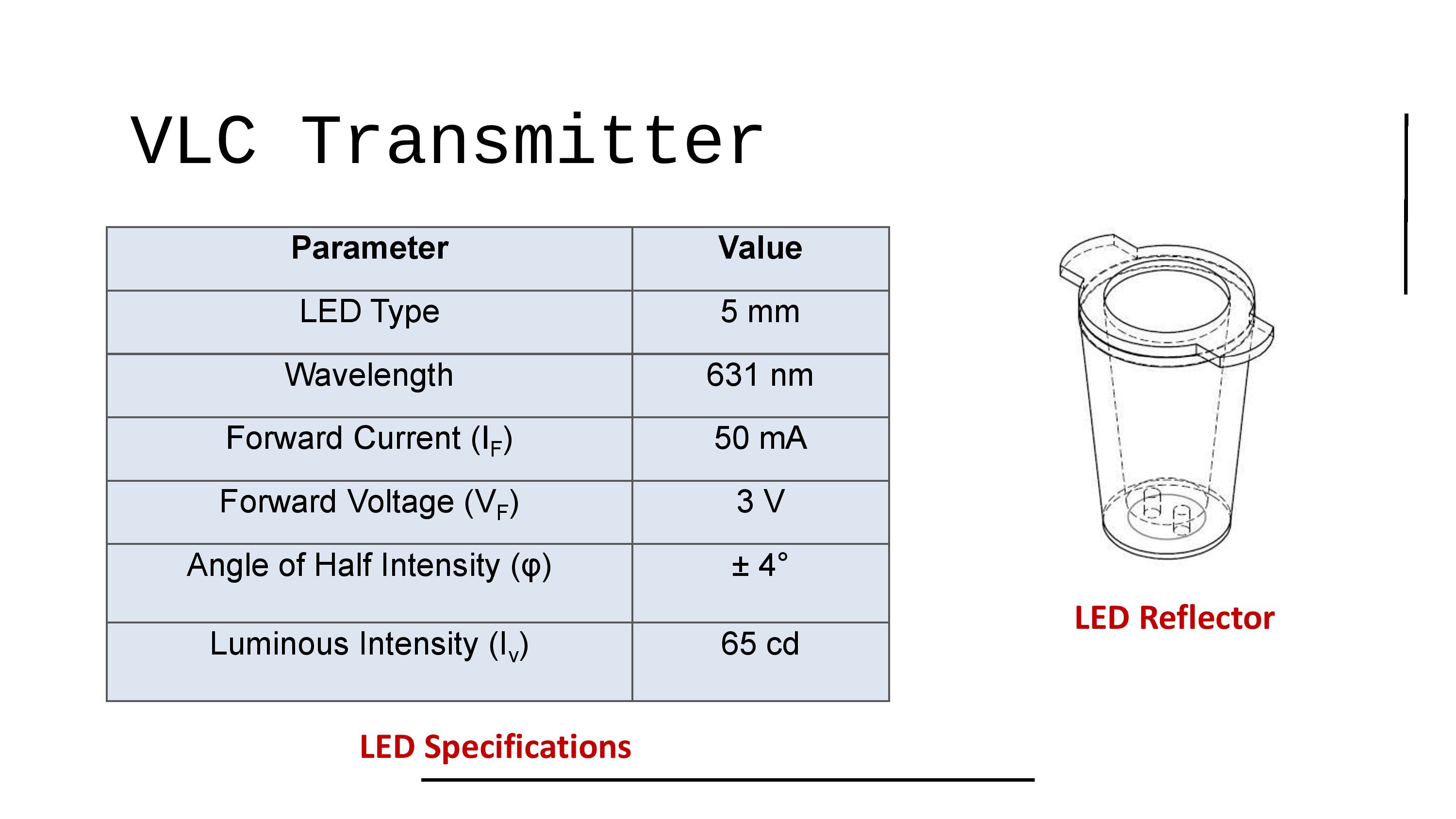 |
Specifications of communication LED used in the proposed system are shown in Table
To achieve more focused beam, conical reflector shown here has been designed
|
 ICACT20230182 Slide.15
[Big slide for presentation]
[YouTube]
ICACT20230182 Slide.15
[Big slide for presentation]
[YouTube] |
Chrome Text-to-Speach Click!! Click!! |
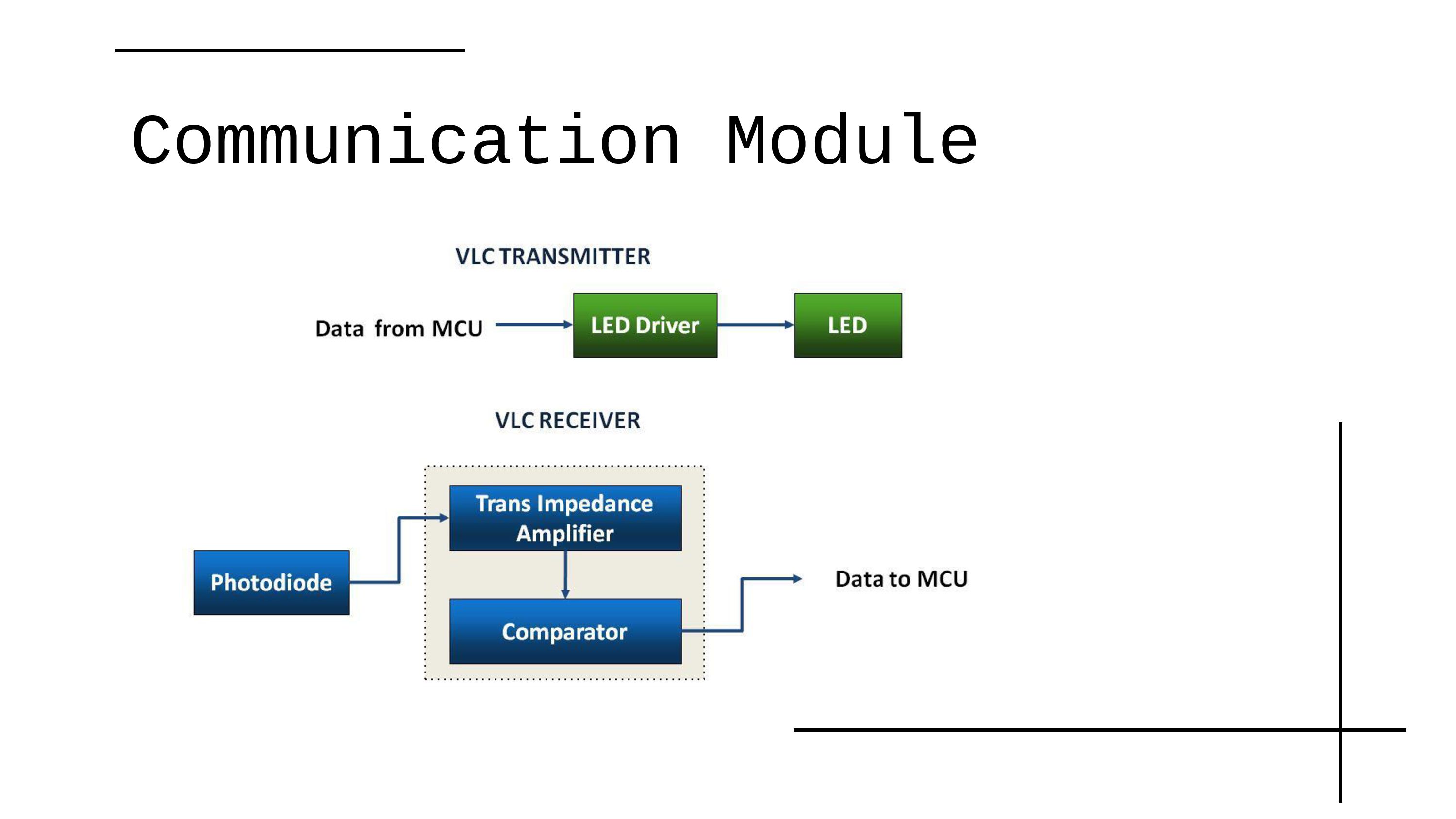 |
Communication module consists of VLC transmitter and receiver as shown here.
VLC transmitter consists of LED driver and a communication LED. Microcontroller module generates commands based on the occupancy state. Generated command is sent to the LED through the driver. LED transmits the command to the receiver module of adjacent luminaries grouped under the zone through visible light.
|
 ICACT20230182 Slide.14
[Big slide for presentation]
[YouTube]
ICACT20230182 Slide.14
[Big slide for presentation]
[YouTube] |
Chrome Text-to-Speach Click!! Click!! |
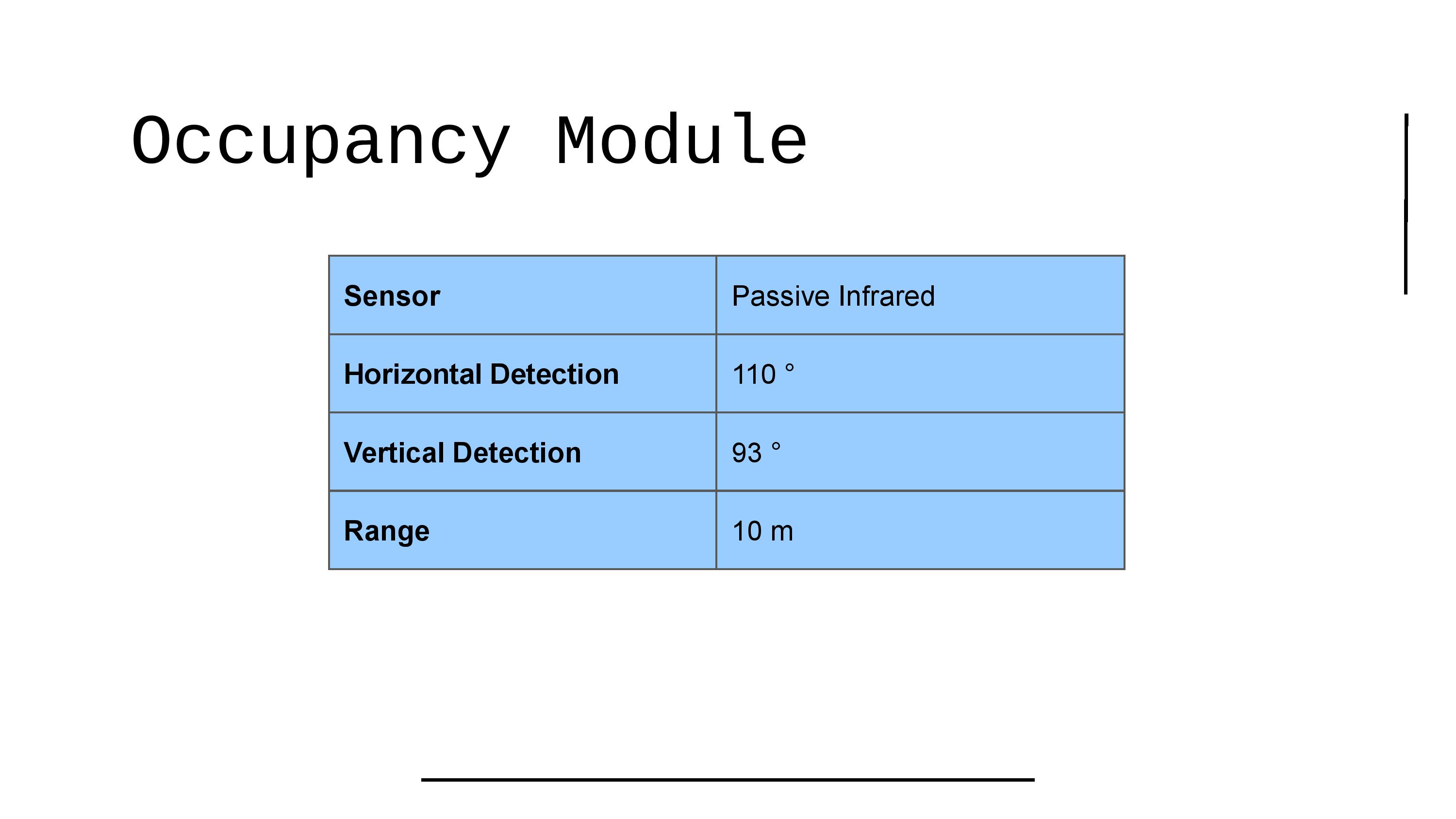 |
Occupancy is sensed using PIR sensor. PIR with 110¡Æ horizontal detection angle, 93¡Æ vertical detection angle and 10 m detection type is used.
|
 ICACT20230182 Slide.13
[Big slide for presentation]
[YouTube]
ICACT20230182 Slide.13
[Big slide for presentation]
[YouTube] |
Chrome Text-to-Speach Click!! Click!! |
 |
VLC Transceiver module consists of communication module, occupancy module and luminaire control module. Overall block diagram of VLC Transceiver is shown here
|
 ICACT20230182 Slide.12
[Big slide for presentation]
[YouTube]
ICACT20230182 Slide.12
[Big slide for presentation]
[YouTube] |
Chrome Text-to-Speach Click!! Click!! |
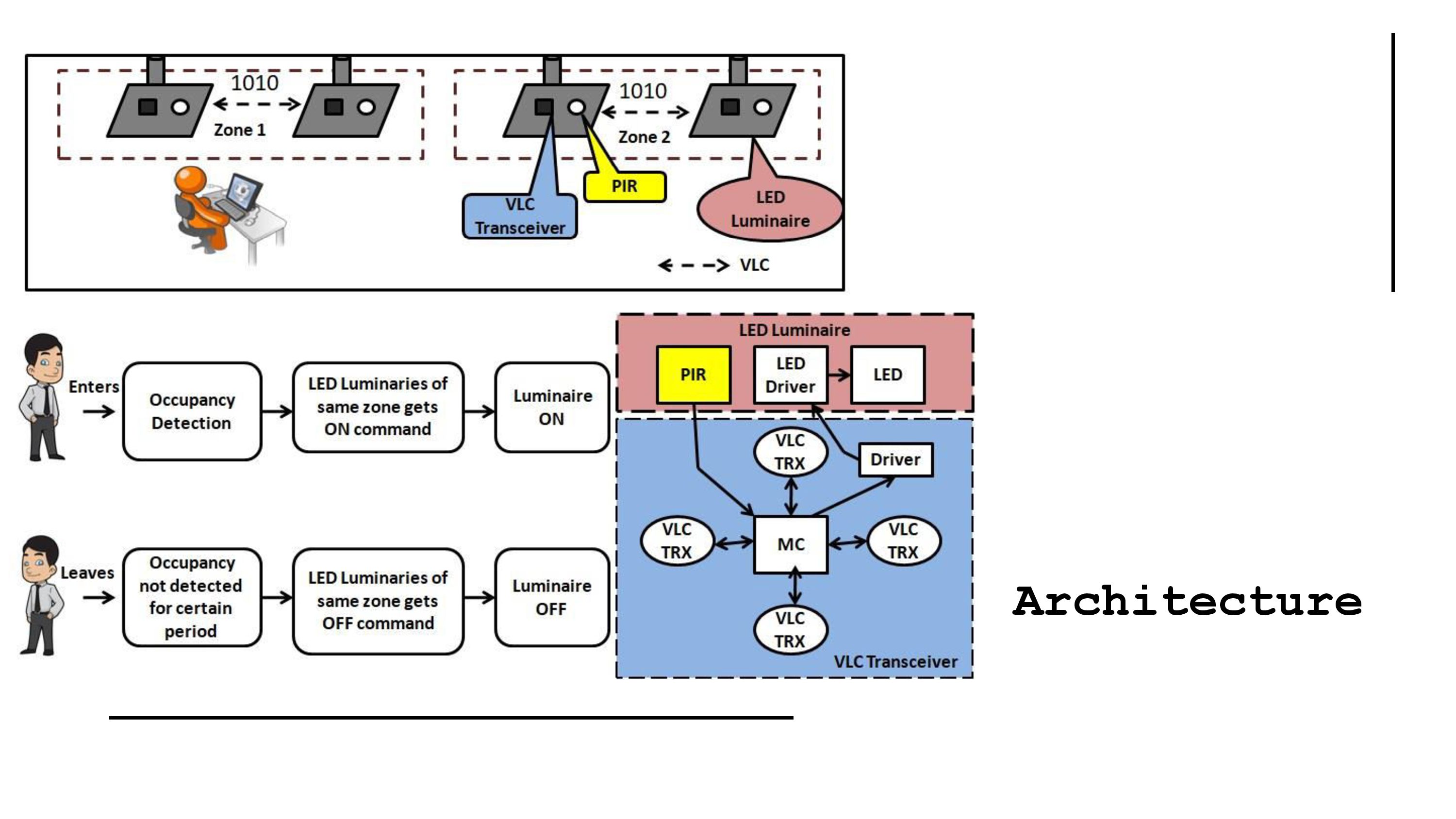 |
VLC enabled luminaires are fixed on the ceilings and visible light is used as a medium of communication between the adjacent luminaire. In addition to illumination LEDs, each luminaire consists of a VLC Transceiver module.
VLC requires line of sight to establish communication between the adjacent luminaire on all four sides. So, a quad directional full duplex VLC transceiver has been designed with 4 communication LEDs that acts as a transmitter and 4 photo detectors that acts as a receiver.
Luminaires are grouped into zones based on user preferences. VLC Transceiver is designed with adjustable slits for enabling zone control.
Luminaires are controlled through visible light based on the occupancy state. Upon detection of occupancy by any luminaire in a zone, all the luminaires under the zone are turned ON. Upon detection of non-occupancy state, a luminaire will be turned OFF only when all other luminaires in a zone is non-occupied.
|
 ICACT20230182 Slide.11
[Big slide for presentation]
[YouTube]
ICACT20230182 Slide.11
[Big slide for presentation]
[YouTube] |
Chrome Text-to-Speach Click!! Click!! |
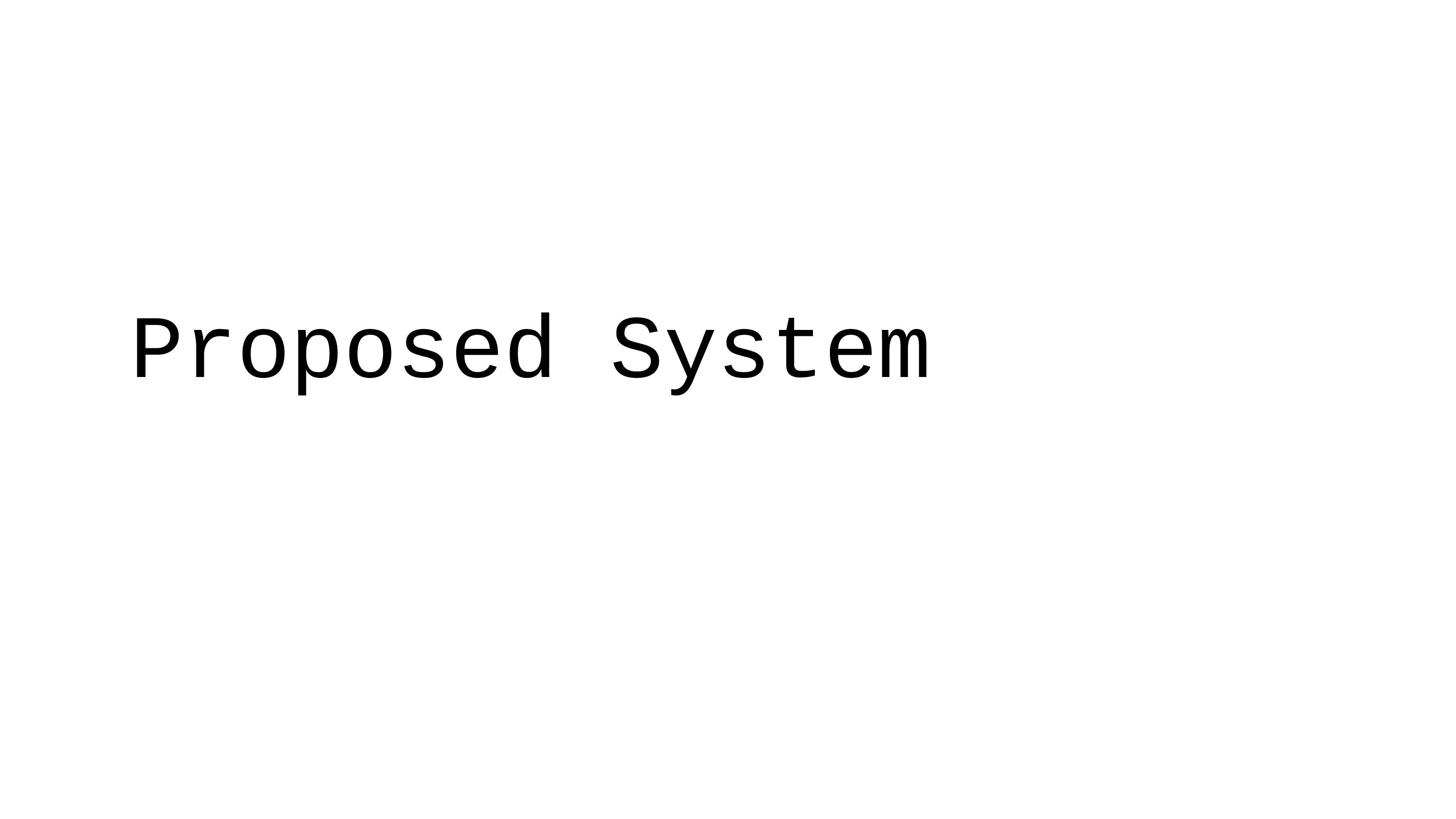 |
This section describes our proposed system
|
 ICACT20230182 Slide.10
[Big slide for presentation]
[YouTube]
ICACT20230182 Slide.10
[Big slide for presentation]
[YouTube] |
Chrome Text-to-Speach Click!! Click!! |
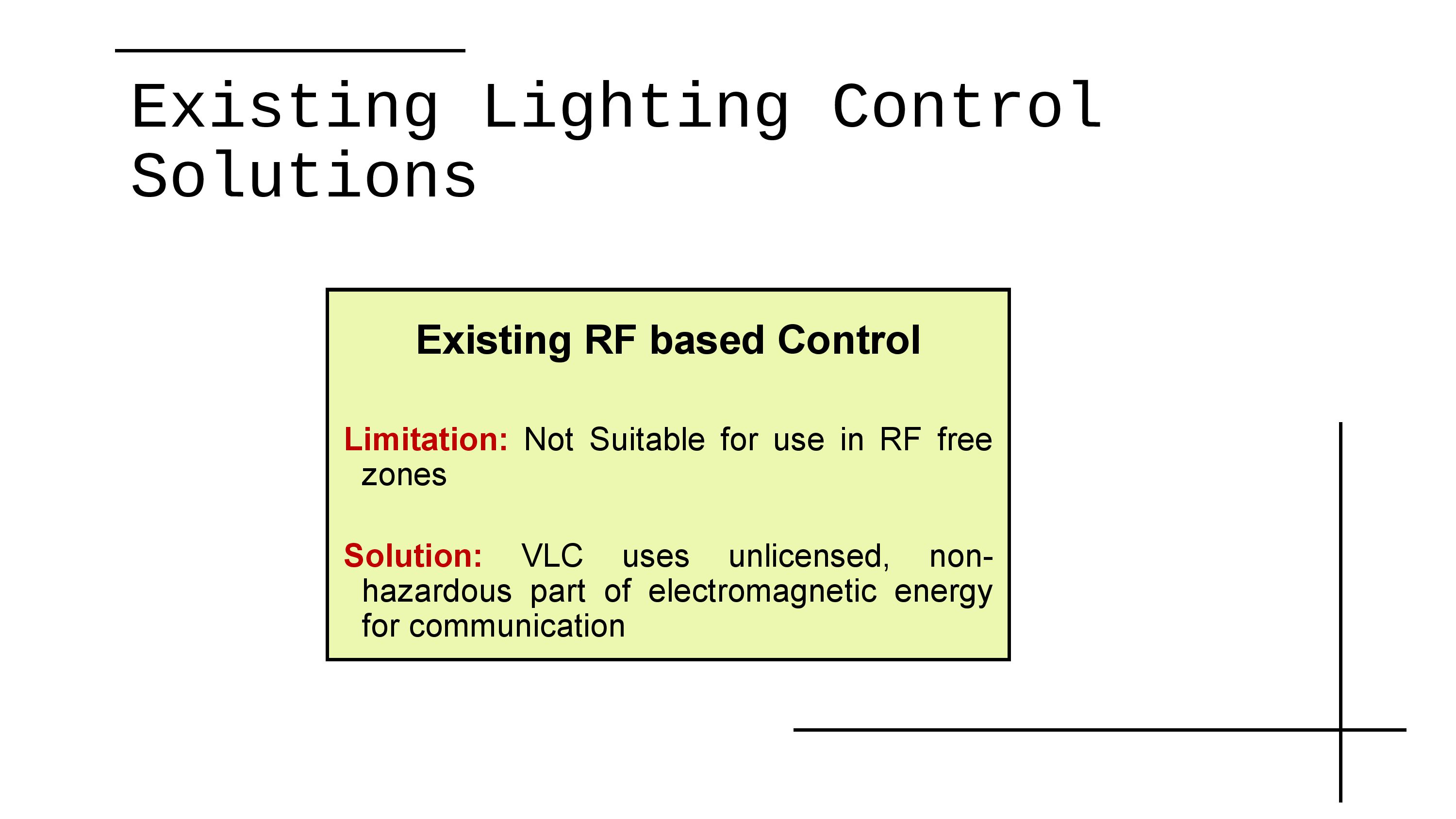 |
Most of the commercially available indoor lighting control solution uses RF based communication and hence are not suitable for use in RF free zones. The proposed VLC based lighting control solution has minimal impact on user¡¯s health and is suitable for use in RF restricted areas.
|
 ICACT20230182 Slide.09
[Big slide for presentation]
[YouTube]
ICACT20230182 Slide.09
[Big slide for presentation]
[YouTube] |
Chrome Text-to-Speach Click!! Click!! |
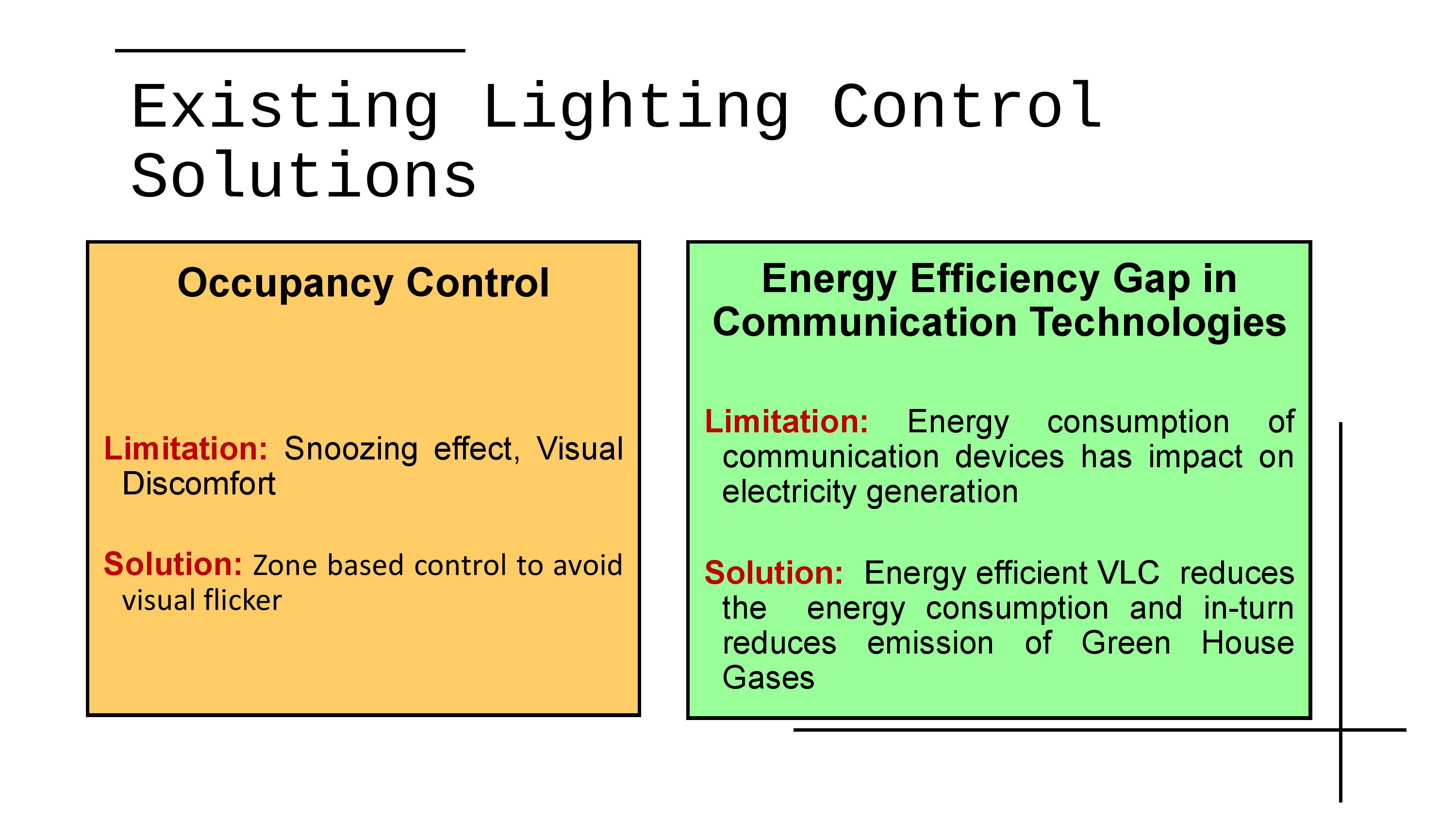 |
Most of the commercial lighting control solutions use PIR sensors for occupancy sensing. PIR detects the occupancy whenever there is a change in the infrared radiation. PIR sensors may sense unoccupied even if there is very little movement. This is referred to as the snoozing effect. Because of the PIR snoozing effect, lights may be turned off and on frequently that leads to visual discomfort. To address this issue, lights are grouped in zones to avoid visual flicker and are turned off only when all the lights in a zone are sense un-occupied.
Lighting control devices are energy efficient but still there exists an energy efficiency gap in the communication technologies. Energy consumption of communication devices has an impact on electricity generation which in turn affects greenhouse gases and carbon footprint. Usage of energy efficient VLC not only reduces energy consumption but also reduces the emission of Green House Gases.
|
 ICACT20230182 Slide.08
[Big slide for presentation]
[YouTube]
ICACT20230182 Slide.08
[Big slide for presentation]
[YouTube] |
Chrome Text-to-Speach Click!! Click!! |
 |
This section describes the existing lighting control solutions
|
 ICACT20230182 Slide.07
[Big slide for presentation]
[YouTube]
ICACT20230182 Slide.07
[Big slide for presentation]
[YouTube] |
Chrome Text-to-Speach Click!! Click!! |
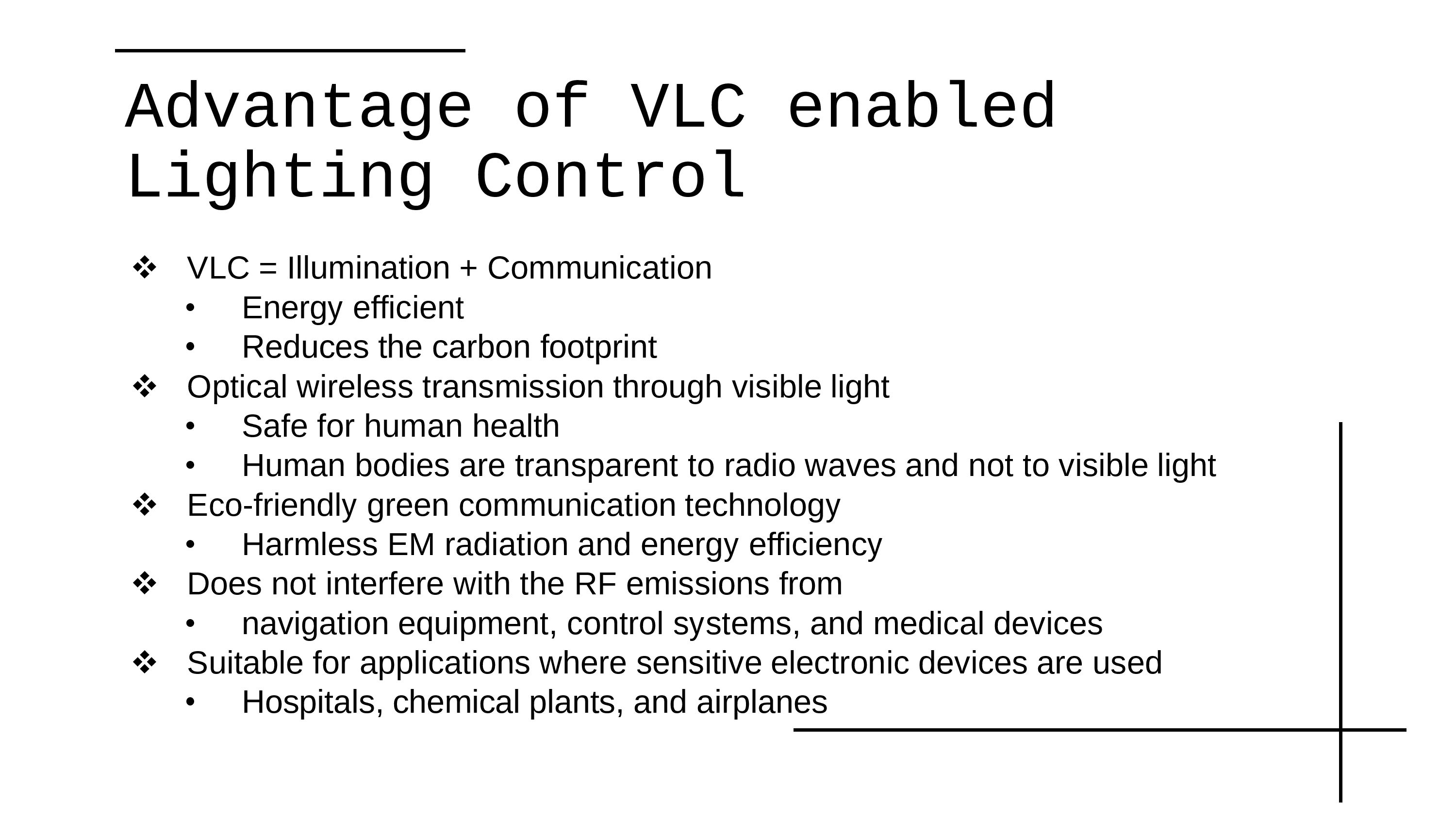 |
VLC combines illumination and communication hence it is energy efficient and reduces the carbon footprint. Optical wireless transmission through visible light is safe for human health as human bodies are transparent to radio waves and not to visible light. Due to harmless EM radiation and energy efficient system, VLC is an eco-friendly green communication technology. VLC does not interfere with the RF emissions from navigation equipment, control systems, and medical devices. VLC is suitable for applications where sensitive electronic devices are used, such as in hospitals, chemical plants, and airplanes. Due to the above-mentioned advantage of VLC, lighting control using VLC for use in RF free zones has been developed.
|
 ICACT20230182 Slide.06
[Big slide for presentation]
[YouTube]
ICACT20230182 Slide.06
[Big slide for presentation]
[YouTube] |
Chrome Text-to-Speach Click!! Click!! |
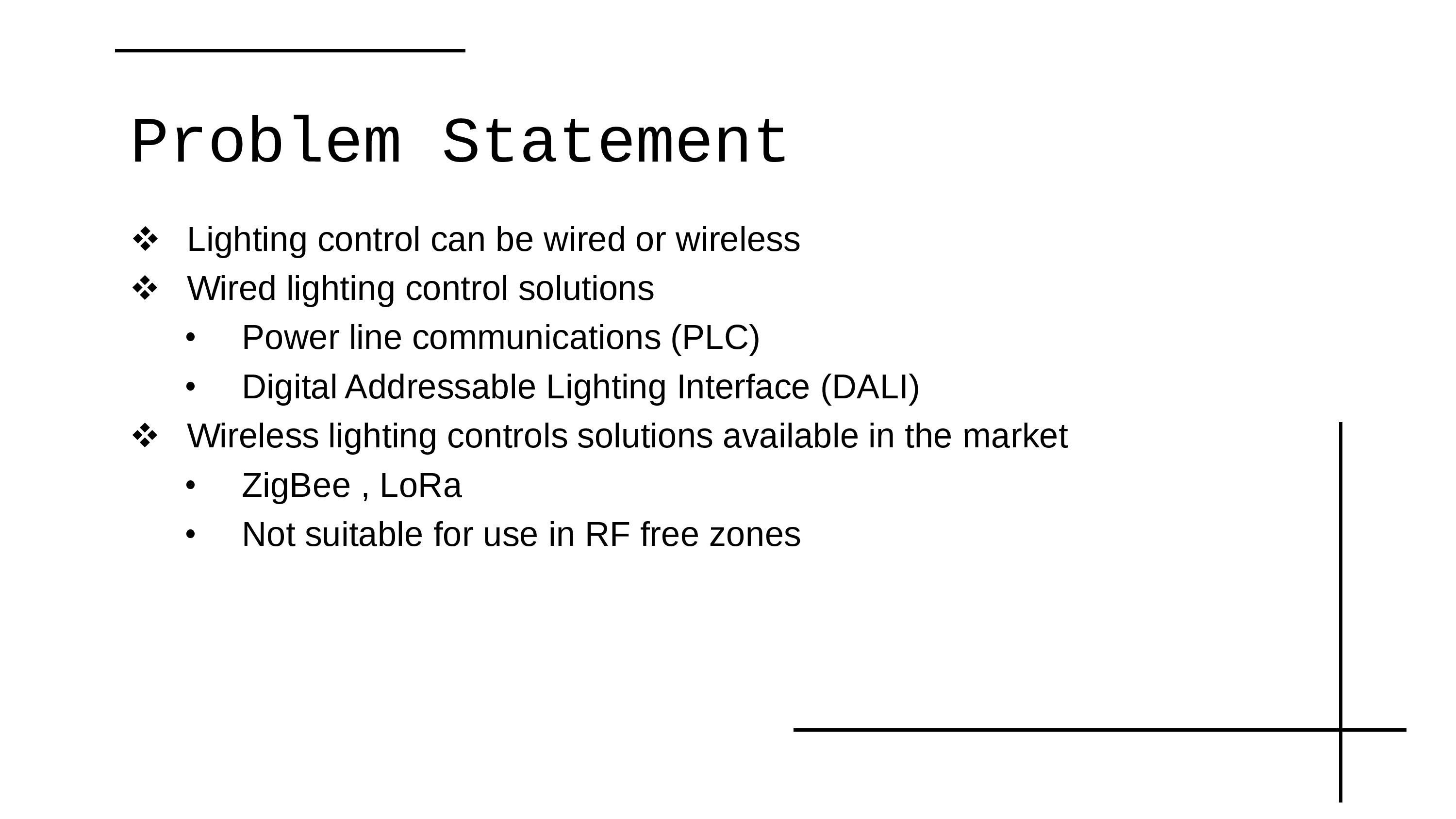 |
Lighting control can be wired or wireless. Wired lighting control solutions use PLC and DALI. Most of the commercial wireless lighting controls solutions available in the market are based on RF. Wireless communication protocols such as ZigBee and LoRa are used for lighting control in indoor and outdoor environments. These solutions are not suitable for use in RF free zones
|
 ICACT20230182 Slide.05
[Big slide for presentation]
[YouTube]
ICACT20230182 Slide.05
[Big slide for presentation]
[YouTube] |
Chrome Text-to-Speach Click!! Click!! |
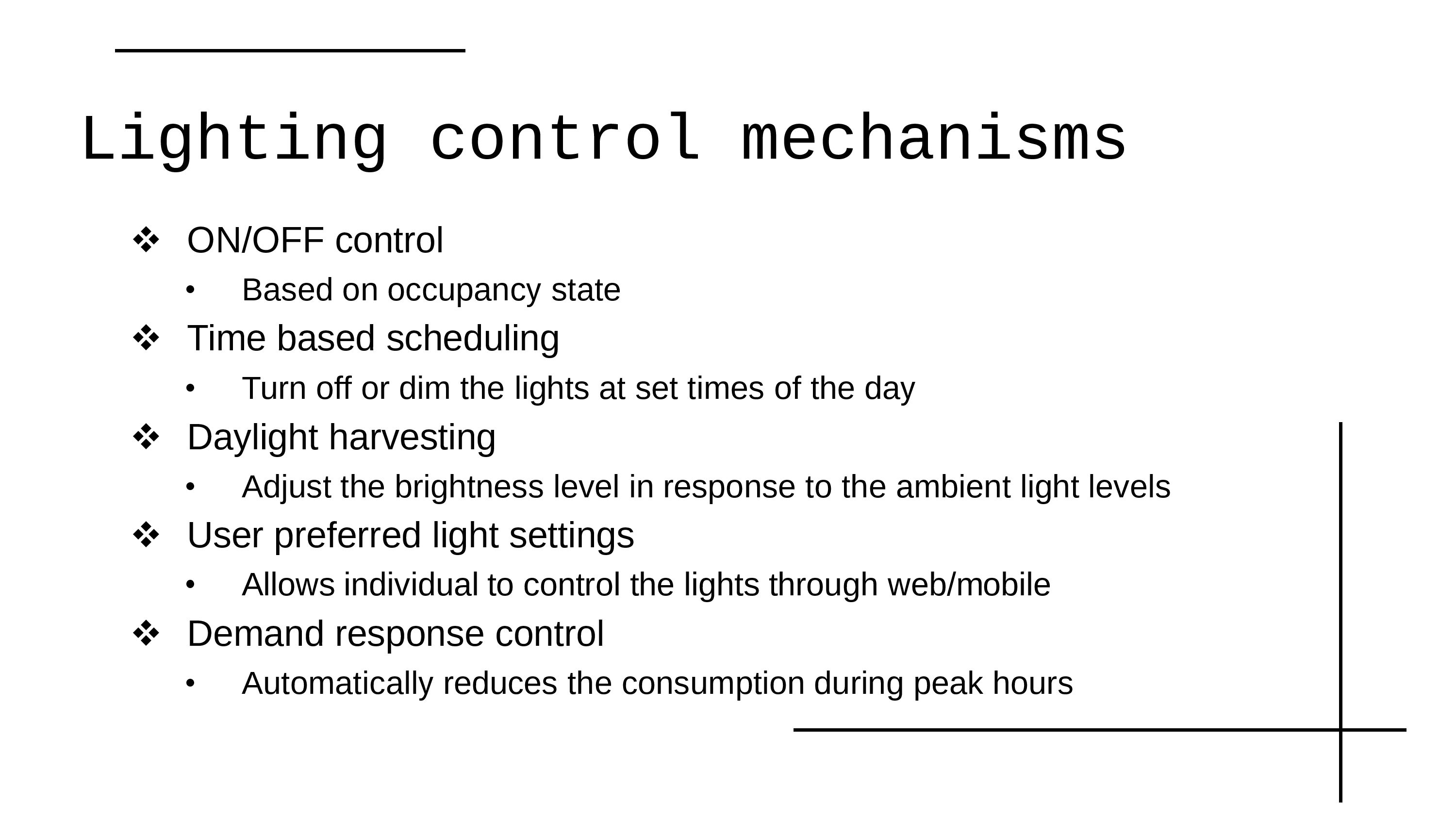 |
Some of the lighting control mechanisms include ON/OFF control based on occupancy state, time-based scheduling that turn off or dim the lights at set times of the day, daylight harvesting that adjust the brightness level in response to the ambient light levels, user preferred light settings that allows individual to control the lights through web/mobile and demand response control that automatically reduces the consumption during peak hours.
Lighting control can be centralized or distributed. By reducing the light turn ON interval or intensity, lighting controls reduces the energy consumption thereby reduces the cost.
|
 ICACT20230182 Slide.04
[Big slide for presentation]
[YouTube]
ICACT20230182 Slide.04
[Big slide for presentation]
[YouTube] |
Chrome Text-to-Speach Click!! Click!! |
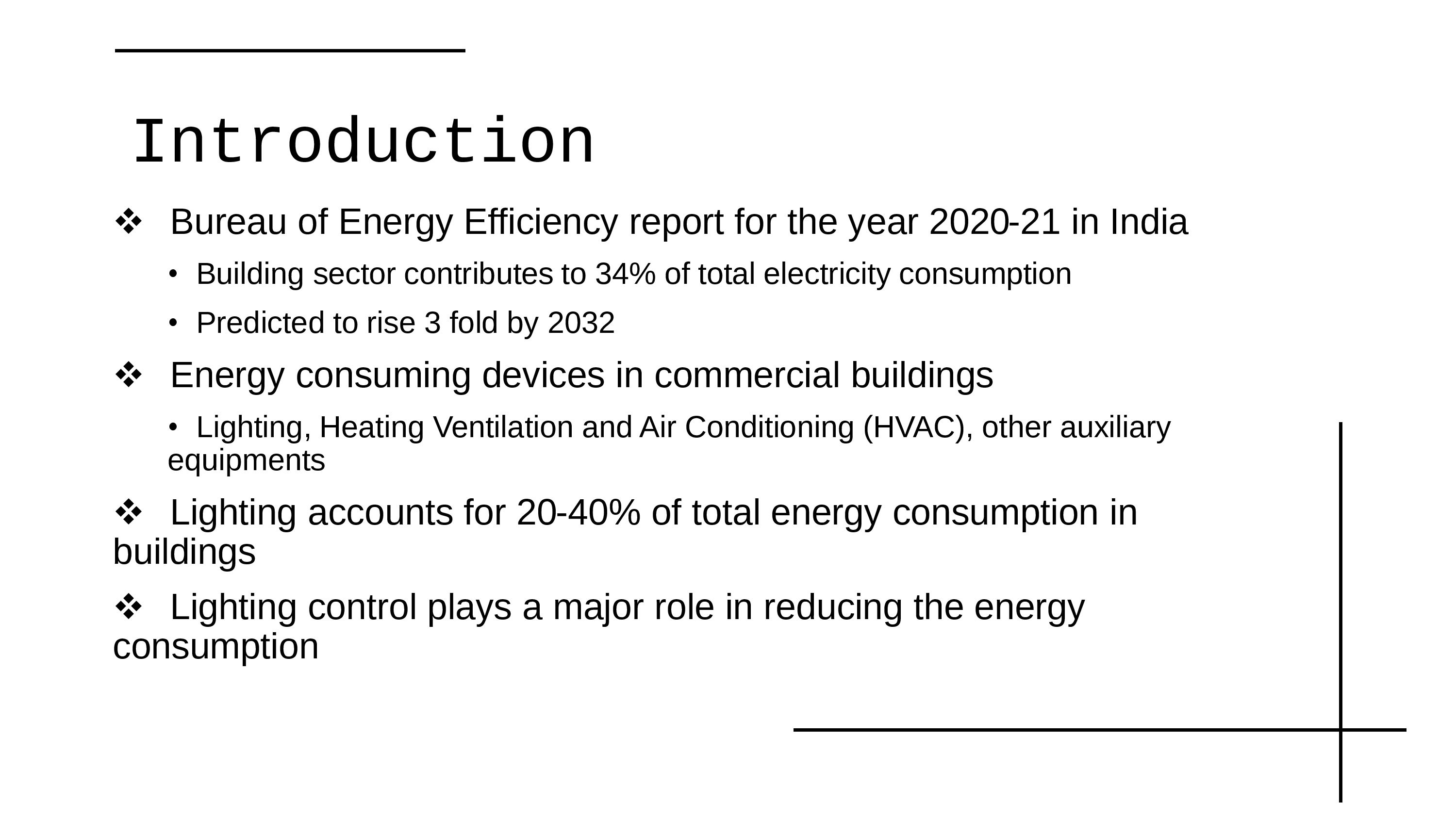 |
In India, as per the Bureau of Energy Efficiency report for the year 2020-21, building sector contributes to 34% of total electricity consumption and is predicted to rise to 3-fold by 2032. Energy consuming devices in commercial buildings include lighting, HVAC and other auxiliary equipment. Lighting accounts for 20% to 40% of total energy consumption in buildings. Lighting control plays a major role in reducing energy consumption.
|
 ICACT20230182 Slide.03
[Big slide for presentation]
[YouTube]
ICACT20230182 Slide.03
[Big slide for presentation]
[YouTube] |
Chrome Text-to-Speach Click!! Click!! |
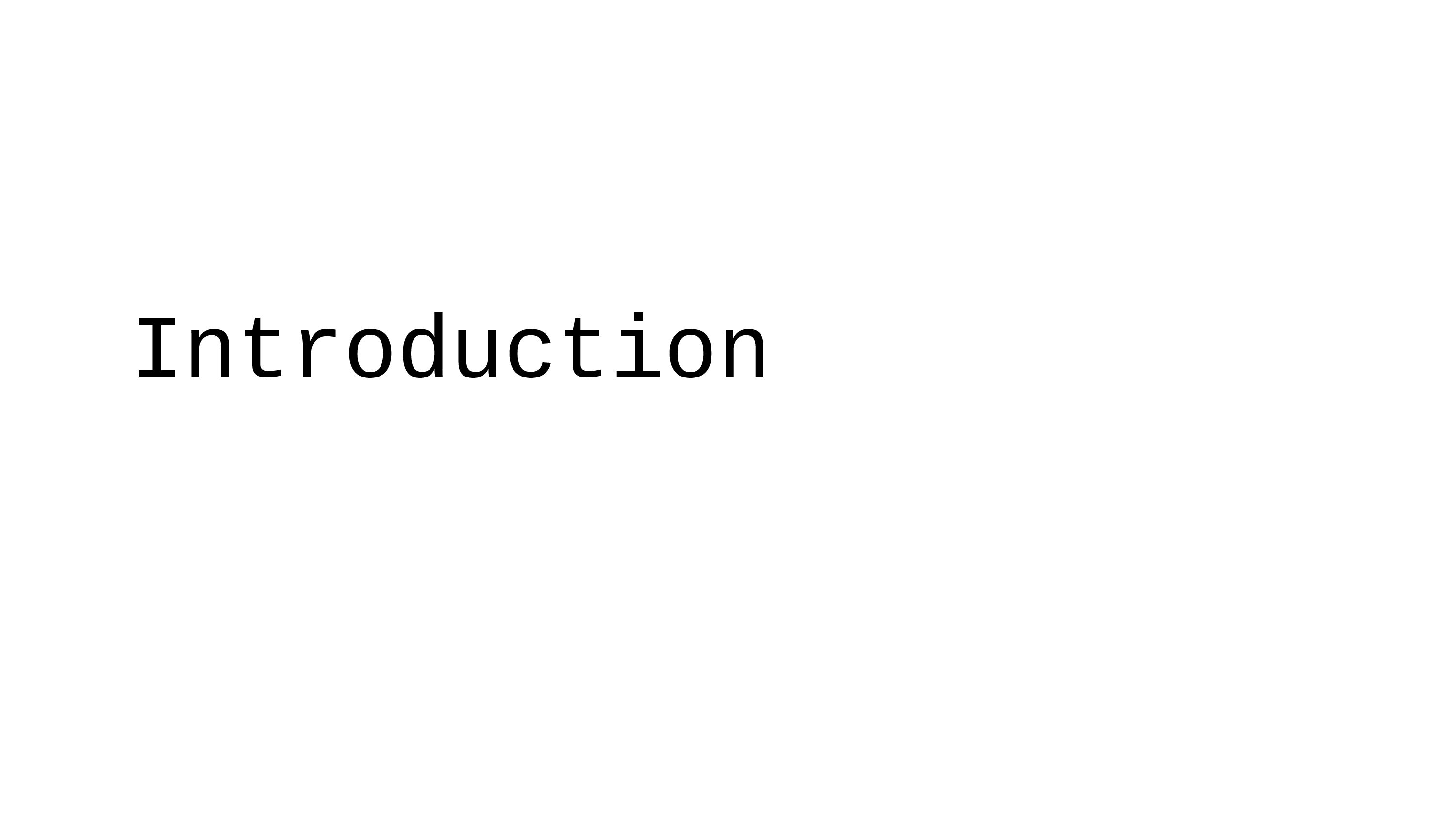 |
Introduction section describes the background knowledge for our work
|
 ICACT20230182 Slide.02
[Big slide for presentation]
[YouTube]
ICACT20230182 Slide.02
[Big slide for presentation]
[YouTube] |
Chrome Text-to-Speach Click!! Click!! |
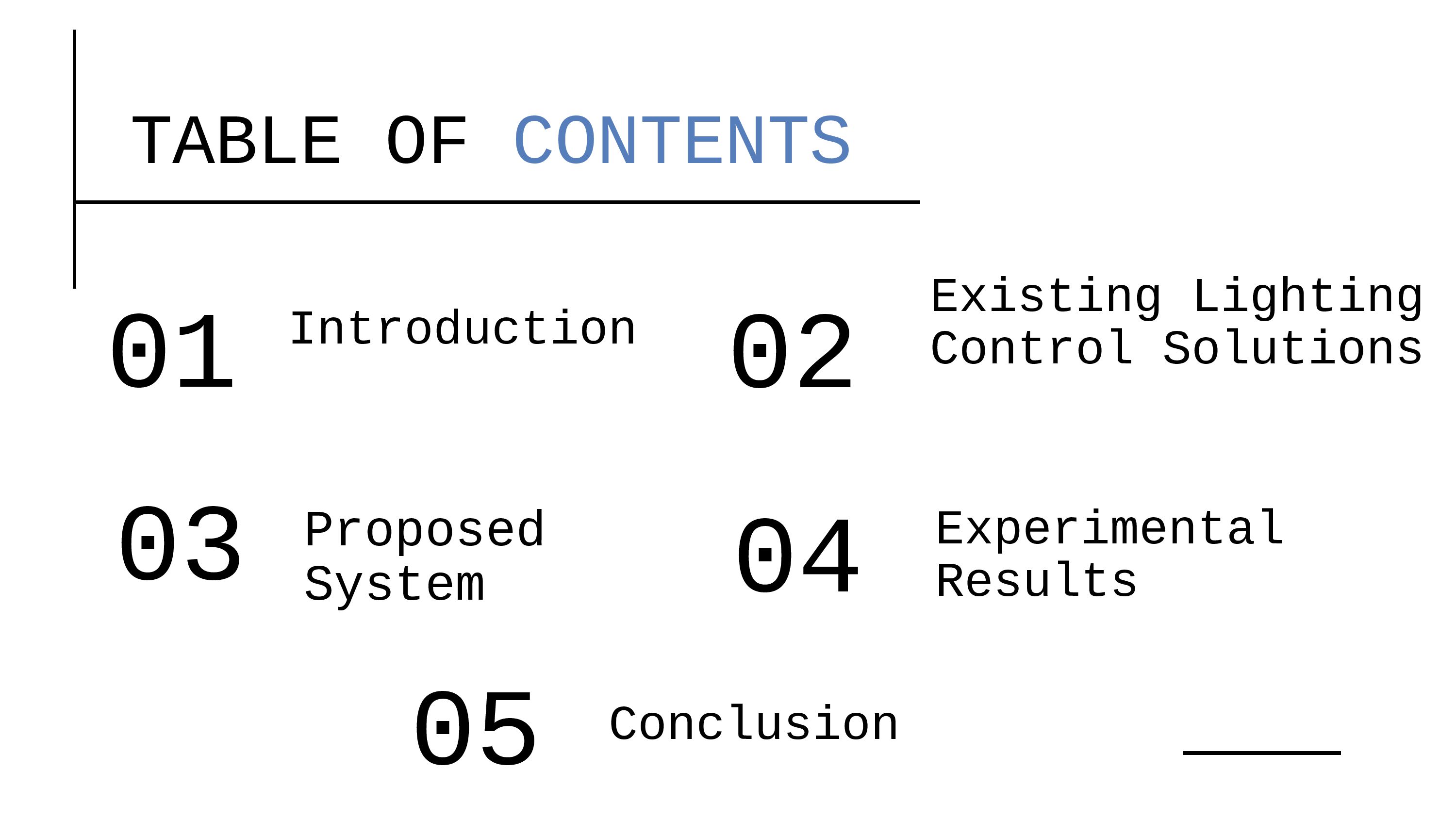 |
Outline of my presentation is as follows: Introduction section will cover the background knowledge about our work. Then the existing lighting control solutions will be discussed in the next section. Followed by this, details of our proposed system with experimental analysis and results will be discussed. Presentation ends with conclusion summary and our future plan
|
 ICACT20230182 Slide.01
[Big slide for presentation]
[YouTube]
ICACT20230182 Slide.01
[Big slide for presentation]
[YouTube] |
Chrome Text-to-Speach Click!! Click!! |
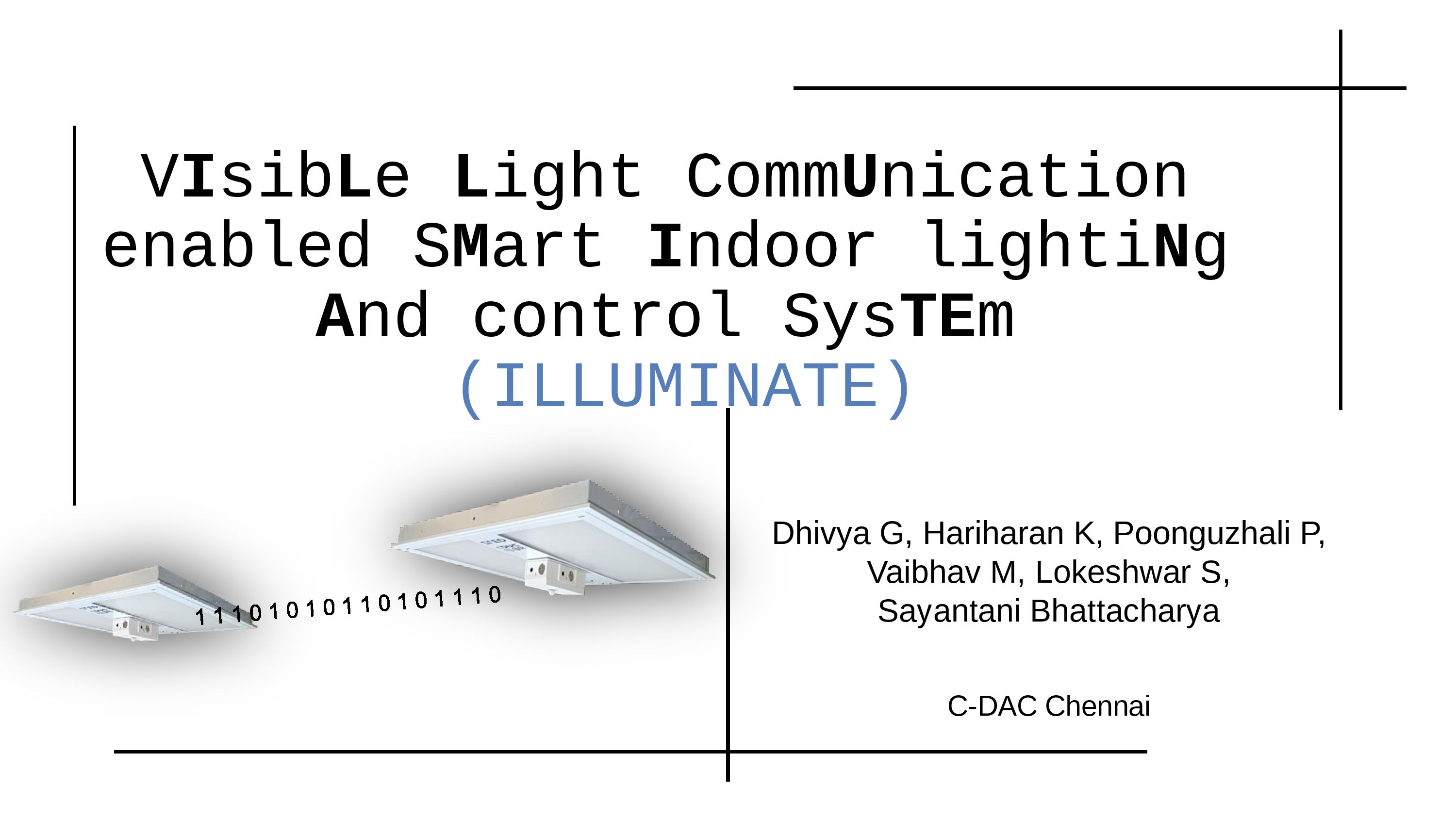 |
Hi everyone. I am Dhivya from C-DAC Chennai, India. I would like to thank the ICACT organizers for giving us the opportunity to present our work. My presentation is about ¡°ILLUMINATE - VIsibLe Light CommUnication enabled SMart Indoor lightiNg And control SysTEm ¡°
|






